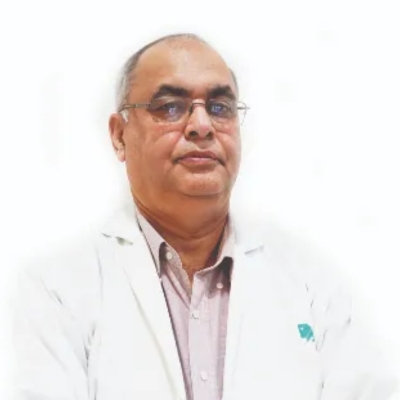Medical Visa Extension in India: How to Apply and What You Need to Know
 27 March,2025
Read More
27 March,2025
Read More
Enquire now in case of any assistance needed
Starting From: USD 650 - USD 1100
Hospitalization Days: 1 Days
Procedure Duration: 30 Min - 50 Min
Varicocele Intervention is affordable in India. The cost of Varicocele Intervention in India lies between USD 650 - USD 1100. The exact procedure price depends on multiple factors such as the surgeon's experience, type of hospital, severity of the condition, patient's general condition,�etc.
Varicocele intervention refers to medical or surgical procedures aimed at treating varicoceles, which are enlarged veins within the scrotum. These dilated veins can lead to discomfort, testicular atrophy, and infertility due to impaired sperm production or function. Varicoceles are a common condition, affecting around 15% of the male population. Intervention typically involves repairing or blocking off the affected veins to restore normal blood flow and alleviate symptoms. Surgical options include open varicocelectomy or minimally invasive procedures like laparoscopic or microsurgical techniques. Non-surgical interventions may include embolization, where the vein is blocked using a small coil or chemical agent.
Varicocele intervention becomes necessary for several reasons, primarily to address the symptoms and potential complications associated with this condition. Below are the key reasons why varicocele intervention is often recommended:
Varicocele intervention is crucial to alleviate pain and discomfort, improve fertility outcomes, prevent testicular atrophy, alleviate psychological distress, and potentially prevent future complications. Timely intervention can significantly improve the overall well-being and reproductive health of individuals affected by varicoceles.
Varicocele, an enlargement of veins within the scrotum, often requires intervention due to associated discomfort, infertility, or potential complications. Several approaches exist for managing varicocele, each tailored to the severity of symptoms and patient preferences.
The choice of intervention depends on factors such as symptom severity, fertility concerns, and patient preferences, to improve quality of life and reproductive health.
Several factors influence the cost of varicocele intervention, ranging from the type of procedure to additional healthcare expenses:
Understanding these factors helps patients make informed decisions and plan for the financial aspects of varicocele intervention.
Patients are carefully selected for varicocele intervention based on several factors, including symptoms, clinical findings, and the potential impact on fertility. Here are the key considerations
The decision to undergo varicocele intervention is made collaboratively between the patient and their healthcare provider, taking into account individual circumstances, preferences, and treatment goals.
Diagnostic tests and evaluations play a crucial role in determining the need for varicocele intervention, helping healthcare providers assess symptoms, confirm the diagnosis, and evaluate the impact on fertility. Here's an overview of the key diagnostic procedures:
By combining information from these diagnostic tests and evaluations, healthcare providers can accurately assess the need for varicocele intervention and tailor treatment recommendations to each patient's unique circumstances, symptoms, and fertility goals.
Varicocele intervention, whether through embolization, surgery, or microsurgery, presents a range of risks and benefits that should be carefully considered by both patients and healthcare providers.
Before deciding on varicocele intervention, healthcare providers thoroughly discuss these risks and benefits with patients, taking into account individual health status, preferences, and treatment goals. The decision-making process involves a collaborative effort to ensure the best possible outcome for the patient.
Recovery and rehabilitation following varicocele intervention, whether it's embolization, surgery, or microsurgery, are crucial aspects of ensuring optimal outcomes and minimizing complications. Here's what patients can typically expect during the recovery process:
Following the healthcare provider's instructions regarding recovery and rehabilitation is essential for a successful outcome after varicocele intervention. Open communication with the healthcare team and adherence to post-operative guidelines contribute to a smoother recovery process and improved long-term outcomes.
After undergoing varicocele intervention, patients can anticipate a phased recovery process that involves immediate post-procedure care, short-term adjustments, and long-term considerations. Here's a comprehensive overview of what to expect:
Throughout the recovery process, open communication with the healthcare team is essential. Patients are encouraged to adhere to post-operative guidelines, attend follow-up appointments, and promptly report any unexpected symptoms or complications. A collaborative approach between the patient and healthcare provider ensures a smoother recovery and improved long-term outcomes.
Varicocele intervention can be performed through several techniques, including embolization, surgical varicocelectomy, and microsurgical varicocelectomy. Here's an overview of each method:
Each varicocele intervention technique has its advantages and considerations, and the choice of approach depends on factors such as the patient's anatomy, the severity of the varicocele, and the surgeon's expertise.
Associate Director
Kidney Transplant Surgeon, Robotic Surgeon, Uro-oncologist
Max Super Speciality Hospital, Saket, New Delhi
Book AppointmentSenior Consultant
Robotic Urologist, Uro-oncologist, Urologist
Indraprastha Apollo Hospital, New Delhi
Book AppointmentSenior Consultant
Pediatric Urologist, Uro-oncologist, Urologist
Indraprastha Apollo Hospital, New Delhi
Book AppointmentGroup Chairman
Robotic Urologist, Urologist
Medanta - The Medicity Hospital, Gurgaon
Book AppointmentVice Chairman
Robotic Urologist, Surgical Oncologist, Uro-oncologist, Urologist
Medanta - The Medicity Hospital, Gurgaon
Book AppointmentDoctor of Pharmacy
Dr. Deepanshu Siwach is a skilled clinical pharmacist with a Doctor of Pharmacy degree.?He has 4+?years of experience and has worked with thousands of patients. He has been associated with some of the top hospitals, such as Artemis Gurgaon.
Dr. Deepanshu Siwach is a skilled clinical pharmacist with a Doctor of Pharmacy degree.?He has 4+?years of experience and has worked with thousands of patients. He has been associated with some of the top hospitals, such as Artemis Gurgaon....
Director
Kidney Transplant Surgeon, Uro-oncologist, Urologist
Aakash Healthcare Super Speciality Hospital, Dwarka, New Delhi
Dr. Vikas Agarwal is a reputed Urologist and Kidney Transplant Surgeon with an experience of more than 22 years. His expertise lies in a wide range of laparoscopic surgeries, including laparoscopic donor nephrectomy, kidney, prostate, and bladder cancer surgery....
The duration of varicocele intervention surgery varies depending on the specific technique used and the complexity of the case. On average, surgical procedures such as varicocelectomy or microsurgical varicocelectomy typically take between 30 minutes to an hour to complete.
The success rate of varicocele intervention varies depending on factors such as the chosen technique, the severity of the varicocele, and individual patient characteristics. However, overall success rates for symptom relief and fertility improvement range from 70% to 90%, with higher success rates reported for microsurgical techniques.
The recovery process for varicocele intervention involves initial post-procedure care, pain management, activity restrictions, and follow-up appointments. Patients typically experience some discomfort and may need to rest for a few days to weeks before gradually resuming normal activities. Open communication with healthcare providers ensures a smoother recovery.
After varicocele intervention surgery, patients are typically provided with pain management medications, such as analgesics or nonsteroidal anti-inflammatory drugs (NSAIDs), to alleviate discomfort. These medications help manage post-operative pain, allowing patients to rest and recover more comfortably.
The timeline for returning to normal activities after varicocele intervention varies. Generally, patients can expect to resume normal activities within a few days to weeks, depending on the type of intervention and individual recovery progress. It's important to follow healthcare provider recommendations for a smooth recovery.
Physical therapy is typically not required after varicocele intervention surgery. However, patients may benefit from gradually increasing physical activity as part of their recovery process. Following the healthcare provider's recommendations for post-operative care and activity restrictions can help promote a smooth recovery without the need for formal physical therapy.
A varicocele intervention typically lasts between 30 minutes to an hour. However, the duration can vary based on factors like the complexity of the procedure and individual patient characteristics. It's important to consult with a healthcare provider for specific details regarding the duration of your varicocele intervention.
Insurance coverage for varicocele intervention surgery varies depending on the type of insurance plan, individual policy terms, and medical necessity. Some plans may cover the procedure partially or fully if deemed medically necessary, while others may require pre-authorization or consider it elective. Check with your insurance provider for details.
After varicocele intervention, lifestyle changes like avoiding heavy lifting, maintaining a healthy weight, and practicing safe lifting techniques may be recommended. Additionally, regular exercise, a balanced diet, and wearing supportive underwear can promote recovery and reduce the risk of complications. Follow your healthcare provider's guidance for personalized recommendations.
Alternative treatments for varicocele intervention include natural remedies like wearing supportive underwear, adopting a healthy lifestyle with regular exercise and a balanced diet, and using supplements like horse chestnut extract or vitamin C. However, these methods may not provide complete resolution, and consulting a healthcare professional is recommended for personalized guidance.
Post-surgery, gentle exercises like walking and light stretching are recommended initially to aid circulation and promote healing. As recovery progresses, low-impact activities such as swimming, stationary cycling, and gentle yoga can be gradually incorporated. It's crucial to follow the specific guidance provided by your healthcare provider to avoid complications and support optimal recovery.
The Art of Effective Communication
 27 March,2025
Read More
27 March,2025
Read More
 26 March,2025
Read More
26 March,2025
Read More
 22 March,2025
Read More
22 March,2025
Read More
 12 March,2025
Read More
12 March,2025
Read More
 24 January,2025
Read More
24 January,2025
Read More
 20 January,2025
Read More
20 January,2025
Read More




